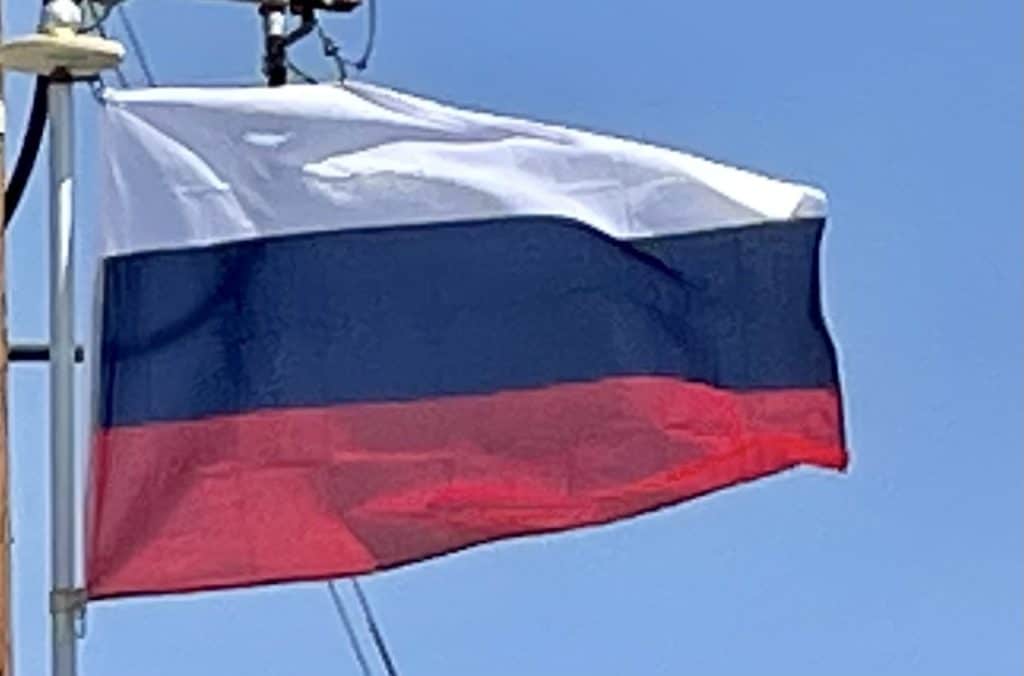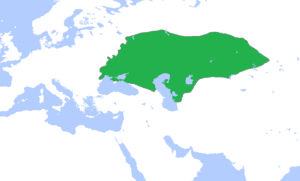
Galicia-Volhynia was eventually assimilated by the Kingdom of Poland, while the Novgorod Republic and Mongol-dominated Vladimir-Suzdal, two regions on the periphery of Kiev, established the basis for the modern Russian nation. The Novgorod Republic escaped Mongol occupation and together with Pskov retained some degree of autonomy during the time of the Mongol yoke; they were largely spared the atrocities that affected the rest of the country. Led by Prince Alexander Nevsky, Novgorodians repelled the invading Swedes in the Battle of the Neva in 1240, as well as the Germanic crusaders in the Battle of the Ice in 1242.
Grand Duchy of Moscow:
The most powerful state to eventually arise after the destruction of Kievan Rus’ was the Grand Duchy of Moscow, initially a part of Vladimir-Suzdal. While still under the domain of the Mongol-Tatars and with their connivance, Moscow began to assert its influence in the Central Rus’ in the early 14th century, gradually becoming the leading force in the process of the Rus’ lands’ reunification and expansion of Russia. Moscow’s last rival, the Novgorod Republic, prospered as the chief fur trade center and the easternmost port of the Hanseatic League.
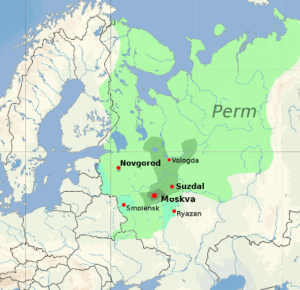
Times remained difficult, with frequent Mongol-Tatar raids. Agriculture suffered from the beginning of the Little Ice Age. As in the rest of Europe, plague was a frequent occurrence between 1350 and 1490. However, because of the lower population density and better hygiene—widespread practicing of banya, a wet steam bath—the death rate from plague was not as severe as in Western Europe, and population numbers recovered by 1500.
Led by Prince Dmitry Donskoy of Moscow and helped by the Russian Orthodox Church, the united army of Russian principalities inflicted a milestone defeat on the Mongol-Tatars in the Battle of Kulikovo in 1380. Moscow gradually absorbed the surrounding principalities, including formerly strong rivals such as Tver and Novgorod.
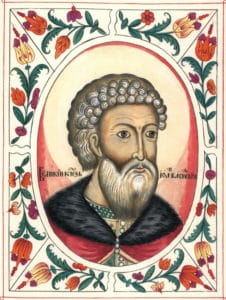
Ivan III (“the Great”) finally threw off the control of the Golden Horde and consolidated the whole of Central and Northern Rus’ under Moscow’s dominion. He was also the first to take the title “Grand Duke of all the Russias”. After the fall of Constantinople in 1453, Moscow claimed succession to the legacy of the Eastern Roman Empire. Ivan III married Sophia Palaiologina, the niece of the last Byzantine Emperor Constantine XI, and made the Byzantine double-headed eagle his own, and eventually Russia’s, coat-of-arms.
Tsardom of Russia:
In development of the Third Rome ideas, the Grand Duke Ivan IV (the “Terrible”) was officially crowned first Tsar of Russia in 1547. The Tsar promulgated a new code of laws (Sudebnik of 1550), established the first Russian feudal representative body (Zemsky Sobor) and introduced local self-management into the rural regions.
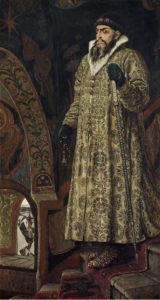
During his long reign, Ivan the Terrible nearly doubled the already large Russian territory by annexing the three Tatar khanates (parts of the disintegrated Golden Horde): Kazan and Astrakhan along the Volga River, and the Siberian Khanate in southwestern Siberia. Thus, by the end of the 16th century, Russia was transformed into a transcontinental state.
